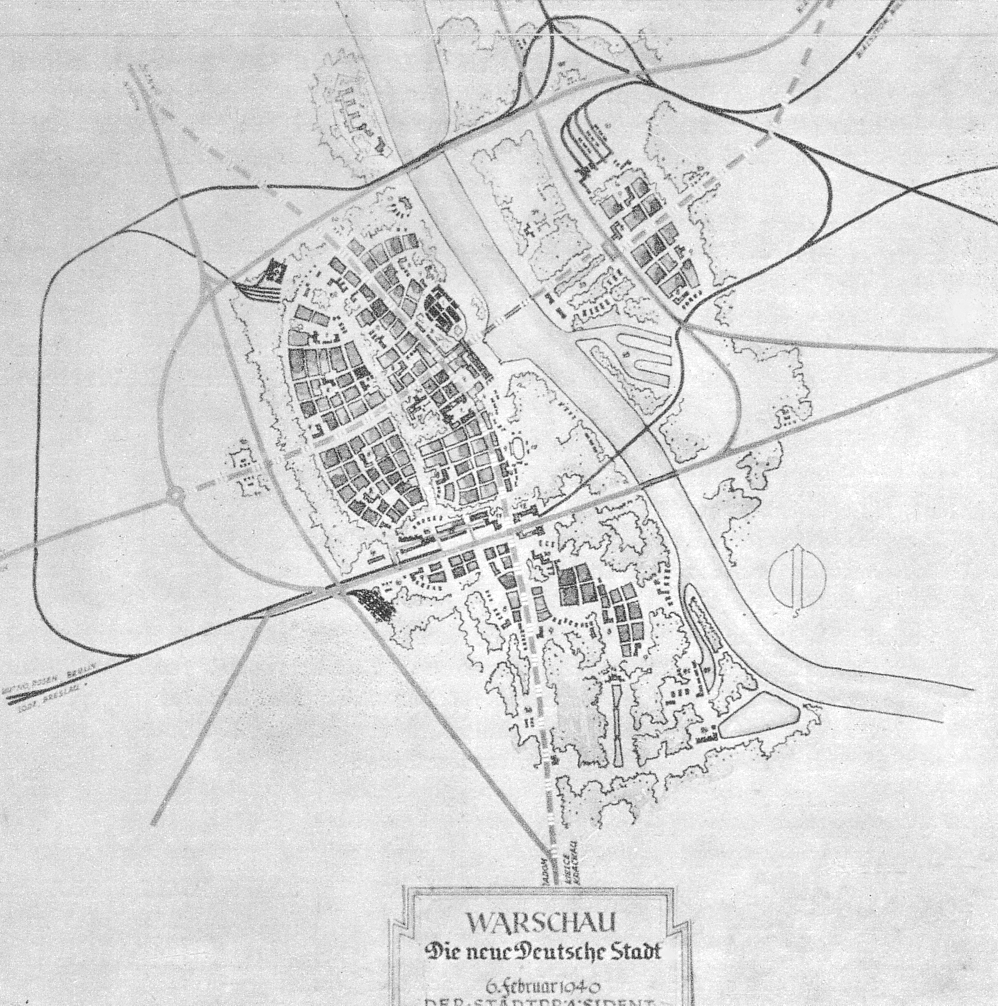Friedrich Pabst was a German architect and engineer who had been acting as the chief architect of occupied Warsaw since the autumn of 1939. In addition to this, in 1942 he personally designed a plan for the transformation of the Old Town, aiming to change the place into a Germanic style. The Pabst Plan is conventionally referred to as the entirety of the projected undertakings of German urban planning in Warsaw between 1939 and 1945. It marked the annihilation of the Polish capital.
Pabst came from Dortmund and completed his studies at the Technical College in Gdańsk. He was supervising the urban and architectural plans for Warsaw, which were intended to make it a completely new city for the German elite – Die Neue Deutsche Stadt.
At Hans Frank’s request, work on this concept was undertaken in 1940 by two architects, Hubert Gross and Otton Nurnberger.
Their idea assumed the demolition of around 95% of the city’s buildings and a radical change in the urban layout. In addition, it was envisaged to reduce the area of Warsaw from 141.5 square kilometres to just 15 square kilometres. This also entailed a huge reduction in its population – from 1.3 million to 130,000, with around 100,000 Germans living in the left bank (inner city) and 30,000 Polish slaves living in the right bank, which was treated as a peripheral area. On the site of the bustling Polish capital, it was planned to create 10 housing estates around a newly arranged city centre for the German elite (Ostruppenhaus). These tasks were carried out as part of the General Plan East (the settlement and Germanisation plan for Central and Eastern Europe), with the intention of simultaneously relegating Warsaw to the role of a transit hub on the west-east axis. In this plan, the former Polish capital was also to play the role of an armament centre. In mid-1940, Adolf Hitler spoke about the future of Warsaw. According to Governor-General Hans Frank, he said that “the reconstruction of this city as a Polish metropolis is absolutely out of the question. The Führer wishes Warsaw to be relegated to the rank of a provincial city”.
As a result of the failures on the fronts, the Germans postponed their urban plans. They partially returned to them during the Warsaw Uprising in 1944. Pabst was killed in an assassination attempt organised by a Home Army Kedyw squad in 1943.
Hubert Gross ran an architectural office in Würzburg in 1946. His plan co-designed with Nurnberger is currently in the archives of the Institute of National Remembrance.





